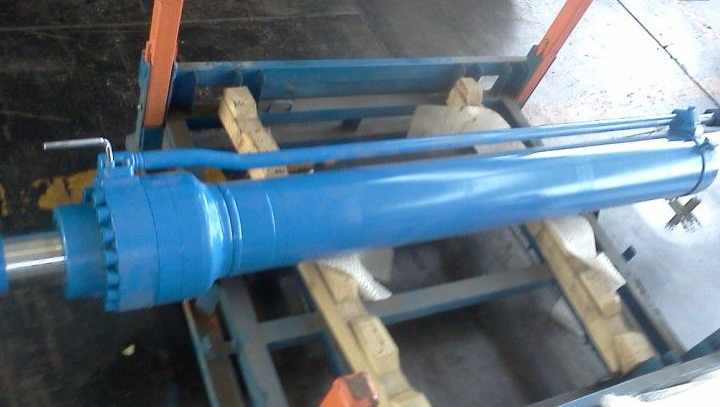Crawling of the excavator cylinder rod is quite common and distressing for excavator drivers. When we finished work in the evening, the excavator’s big and small arms were not parked properly. When I checked the machine tomorrow morning, I found that the big and small arms had sunk. I feel like there is something wrong with this machine. In fact, every excavator leaves the factory with certain quantitative standards for crawling indicators. The ideal state is preferably no crawling, but in the actual production and manufacturing process, it is difficult to achieve, so there is a “standard upper and lower limit”. Of course, each manufacturer has its own extreme standards, and each one is different. Even the big and small arms and bucket cylinder rods are also different. Only when this “creeping amount” exceeds the upper and lower limits, then the excavator can be considered to be faulty. So what is the cause of the fault?
The reasons for the crawling phenomenon include both reasons outside the hydraulic cylinder and reasons within the hydraulic cylinder itself. Let’s analyze them together below.
1. Please check whether air enters the cylinder
A. If air is mixed in the oil and air is sucked in from the hydraulic pump, you can first eliminate the air intake failure of the hydraulic pump.
B. For new hydraulic cylinders, repaired hydraulic cylinders or hydraulic cylinders whose equipment has been shut down for a long time, air will enter the cylinder and pipes. It can be exhausted through the bleed plug of the hydraulic cylinder. For hydraulic cylinders that are not equipped with special exhaust devices, you can first slightly loosen the inlet and outlet pipe joints at both ends of the hydraulic cylinder, and run it back and forth several times to allow the hydraulic cylinder to exhaust. If the oil leaking from the joint changes from turbid to clear, it means that the air has been removed, and the pipe joint can be tightened again. For hydraulic cylinders that are difficult to remove air using this method, the air can be removed by loading and exhausting and filling the cylinder with oil and exhaust.
C. If negative pressure is formed in the cylinder and air is easily sucked in from the piston rod, attention should be paid to the rationality of the piston rod seal design.
D. After starting up, let the hydraulic cylinder run at its maximum stroke and speed to force the gas out.
2. Please check the assembly accuracy of the hydraulic cylinder.
The assembly quality of hydraulic cylinders should be improved. For example, when the piston rod and the piston are not concentric, correct the coaxiality of the two; when the piston rod is bent, straighten the piston rod. The piston rod and guide sleeve should be matched with H8/f8. Regular manufacturers should be used strictly in accordance with size standards and quality standards. For qualified sealing rings and V-shaped sealing rings, the sealing friction should be adjusted to a moderate level. For another example, the connection point between the load and the piston rod should be as close as possible to the sliding surface of the guide rail; the axis center line of the piston rod should be consistent with the center line of the load; the contact length with the guide rail should be as long as possible; the connection position between the load and the hydraulic cylinder should be based on the direction of the hydraulic cylinder. The thrust shall not cause the load to tilt; the guidance must be good, the machining accuracy and assembly accuracy must be good, and attention must be paid to lubrication.
3. Please check whether the hydraulic cylinder end cover seal is too tight or too loose.
Adjust the sealing ring so that it is not tight but not loose, and the guide set is concentric to ensure that the piston rod can move back and forth by hand (or just tap with a hammer), and there is a slight oil film on the piston rod.
4. Please check the assembly and lubrication of the guide rails
Measures such as cleaning and dredging the guide rail lubrication device, readjusting the lubrication pressure and lubrication flow rate, and applying a layer of anti-climbing oil (such as molybdenum disulfide lubricant) between the relative moving surfaces of the guide rail can be taken.
If you need to replace spare parts while the excavator is in use, you can contact us or browse our spare parts website directly. If you want to buy a second-hand excavator, you can also consult us directly. CCMIE will serve you wholeheartedly.
Post time: Apr-11-2024

